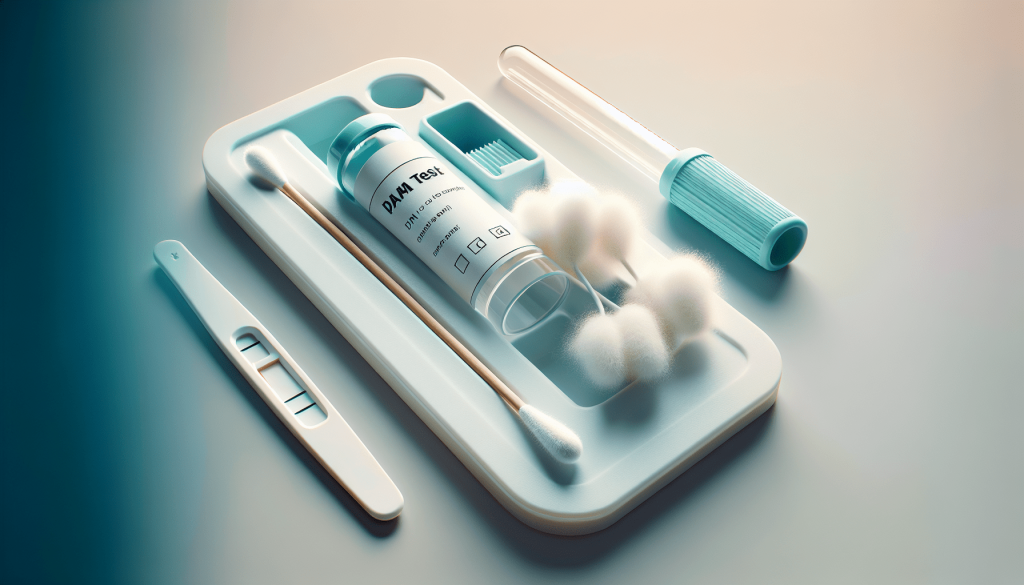Have you ever wondered if a DNA paternity test could cause a miscarriage? You’re not alone. Many expectant mothers and fathers think about this when considering a paternity test during pregnancy. Miscarriage fears are common, especially when considering medical procedures.
Introduction to DNA Paternity Testing
DNA paternity testing is a powerful tool used to determine the biological father of an unborn or born child. It’s often the subject of great interest, especially when questions about paternity arise. With advancements in medical science, several types of paternity testing are available. Each carries its own set of risks and benefits.
Types of DNA Paternity Tests
There are three main types of DNA paternity tests:
-
Pre-natal Paternity Testing:
- Non-Invasive Prenatal Paternity (NIPP): This method is the safest and involves a simple blood draw from the mother and a cheek swab or blood sample from the alleged father. The baby’s DNA can be found in the mother’s bloodstream and compared to the father’s sample.
- Chorionic Villus Sampling (CVS): Performed between 10-13 weeks of pregnancy, this test involves taking a tissue sample from the placenta.
- Amniocentesis: Conducted between 14-20 weeks of pregnancy, this method requires a sample of the amniotic fluid surrounding the baby.
-
Post-natal Paternity Testing: Conducted after the child’s birth, typically using a cheek swab to collect DNA from the baby and father.
-
Legal Paternity Testing: Performed to provide a legal document establishing paternity, which may be required for child custody or support cases.
Each method has its own implications for the health of the mother and the unborn child.
Miscarriage Risks Associated with Prenatal Paternity Testing
Understanding the risks is crucial if you’re considering a prenatal DNA paternity test. Miscarriage is a potential concern for some methods, primarily those considered invasive.
Non-Invasive Prenatal Paternity (NIPP) Testing
NIPP is the least risky option as it doesn’t involve any needles entering the uterus. This test analyzes cell-free fetal DNA present in the mother’s blood. The risks are negligible beyond standard blood draw risks, such as minor bruising or discomfort.
Benefits and Limitations of NIPP
-
Benefits:
- Safe for the mother and the fetus.
- Can be performed as early as seven weeks into the pregnancy.
- No risk of miscarriage.
-
Limitations:
- Higher cost compared to other methods.
- Not universally available, and results can sometimes take longer.
Chorionic Villus Sampling (CVS)
CVS involves taking a small sample of tissue from the placenta. This procedure is invasive and therefore poses some risk.
Risks and Procedure
-
Procedure:
- Guided by ultrasound, a thin needle is inserted through the abdomen or a thin tube through the cervix to collect the sample.
-
Risks:
- Miscarriage risk: Approximately 1% (one in 100 procedures).
- Potential discomfort and cramping.
- Infection and spotting or bleeding.
Who Might Consider CVS
CVS may be recommended if there’s a medical need to detect chromosomal abnormalities, not just for paternity testing. It’s a balancing act between risks and benefits.
Amniocentesis
Amniocentesis is another invasive test involving a sample of the amniotic fluid. Though used primarily for genetic information, it can also provide paternity information.
Risks and Procedure
-
Procedure:
- A thin needle is guided by ultrasound through the abdomen into the amniotic sac to draw fluid.
-
Risks:
- Miscarriage risk: About 0.1% to 0.3% (one in 300 to 500 procedures).
- Possibility of infections, preterm labor, and leakage of amniotic fluid.
When to Consider Amniocentesis
Typically considered for women at higher risk of chromosomal abnormalities, like those over 35 or with a family history of genetic disorders. However, the risk may outweigh the need for paternity testing alone.

Factors to Consider Before Opting for Prenatal Testing
Making an informed decision means evaluating various factors that can affect both the mother and the unborn child.
Medical History and Pregnancy Health
Your medical history and the current health of your pregnancy are crucial considerations. If you have a high-risk pregnancy due to age, previous complications, or other medical conditions, the risks associated with invasive tests like CVS or amniocentesis may be higher.
Urgency of Paternity Information
Determine the urgency and reasons for establishing paternity. If immediate paternity confirmation isn’t crucial, consider waiting until after birth to conduct a non-invasive paternity test.
Availability of Non-Invasive Options
Check if non-invasive options are available in your area. While these tests are safer, they may not be as readily available and could be more expensive.
Psychological and Emotional Impact
Consider the emotional toll of the testing process and the potential impact of the results. Engage in open and supportive communication with all parties involved to ensure emotional well-being.
Steps to Take if You Decide on Prenatal Paternity Testing
If you decide that prenatal paternity testing is necessary and worth the risk, follow these suggested steps to ensure a safer experience.
Consult with Your Healthcare Provider
Discuss the available options with your healthcare provider. They can offer guidance based on your specific health circumstances and the recommended procedures.
Consider Genetic Counseling
Genetic counseling can provide clarity on the potential risks and benefits. A genetic counselor can offer a balanced perspective, helping you make a more informed decision.
Choose a Reputable Laboratory
Ensure the testing is conducted by a reputable laboratory. Research and select a lab with a strong track record of accuracy and safety protocols.
Plan for Support
Have a strong support system in place. Whether it’s family, friends, or a partner, emotional support is invaluable during this time.
Follow Pre-test and Post-test Instructions
Adhere strictly to pre-test and post-test instructions provided by your healthcare professional to minimize risks and ensure accuracy.

Alternative Solutions and Considerations
If prenatal testing seems too risky, consider these alternatives:
Postnatal Paternity Testing
Wait until after the birth of your child to conduct a DNA paternity test. This option eliminates any risk to the pregnancy and is straightforward, with a simple cheek swab from the baby and alleged father.
Legal and Custody Solutions
In some cases, legal solutions can provide temporary resolutions without immediate paternity confirmation. Family courts can help arrange interim custody or support agreements until paternity is established post-birth.
Emotional and Psychological Support
The uncertainties of pregnancy and paternity can be stressful. Seeking support from counselors or support groups can provide relief and strategies for managing stress.
Conclusion: Balancing Risks and Needs
Deciding whether to pursue prenatal paternity testing involves weighing potential risks against the need for information. Non-invasive options provide a safer alternative, but invasive methods like CVS and amniocentesis carry measurable risks including miscarriage. Carefully consider your health, the pregnancy’s health, and the urgency of the paternity information. Consulting with healthcare professionals and genetic counselors can guide you to the best decision for you and your unborn child.
Making a well-informed choice will ultimately provide peace of mind and ensure the safety of both mother and baby.
